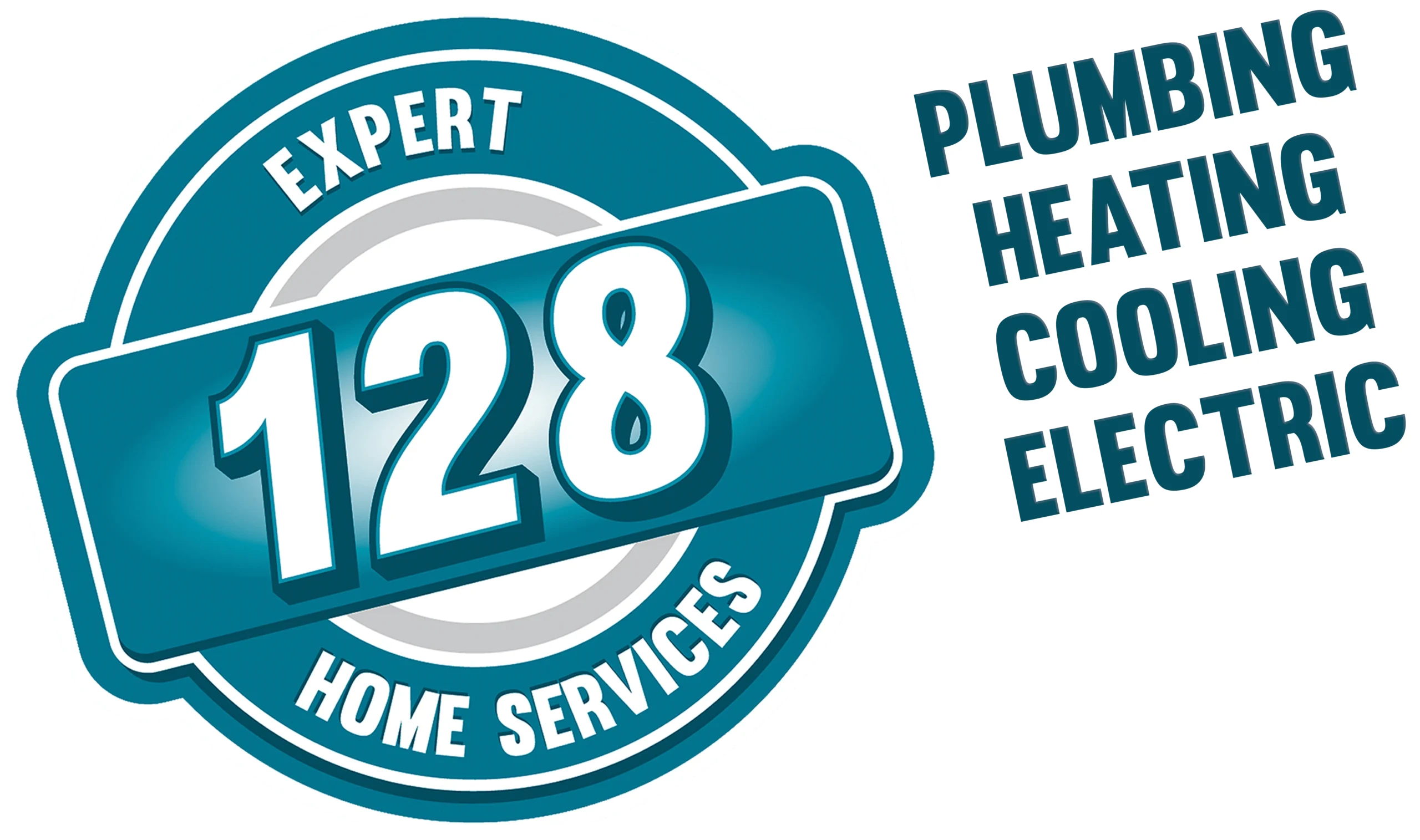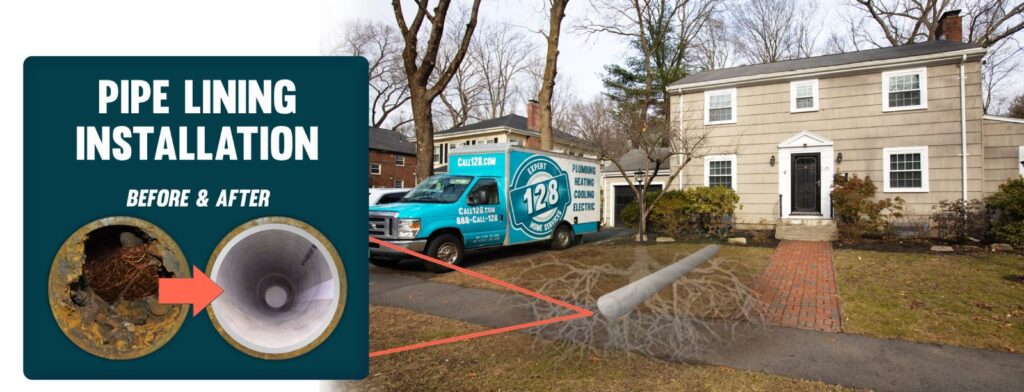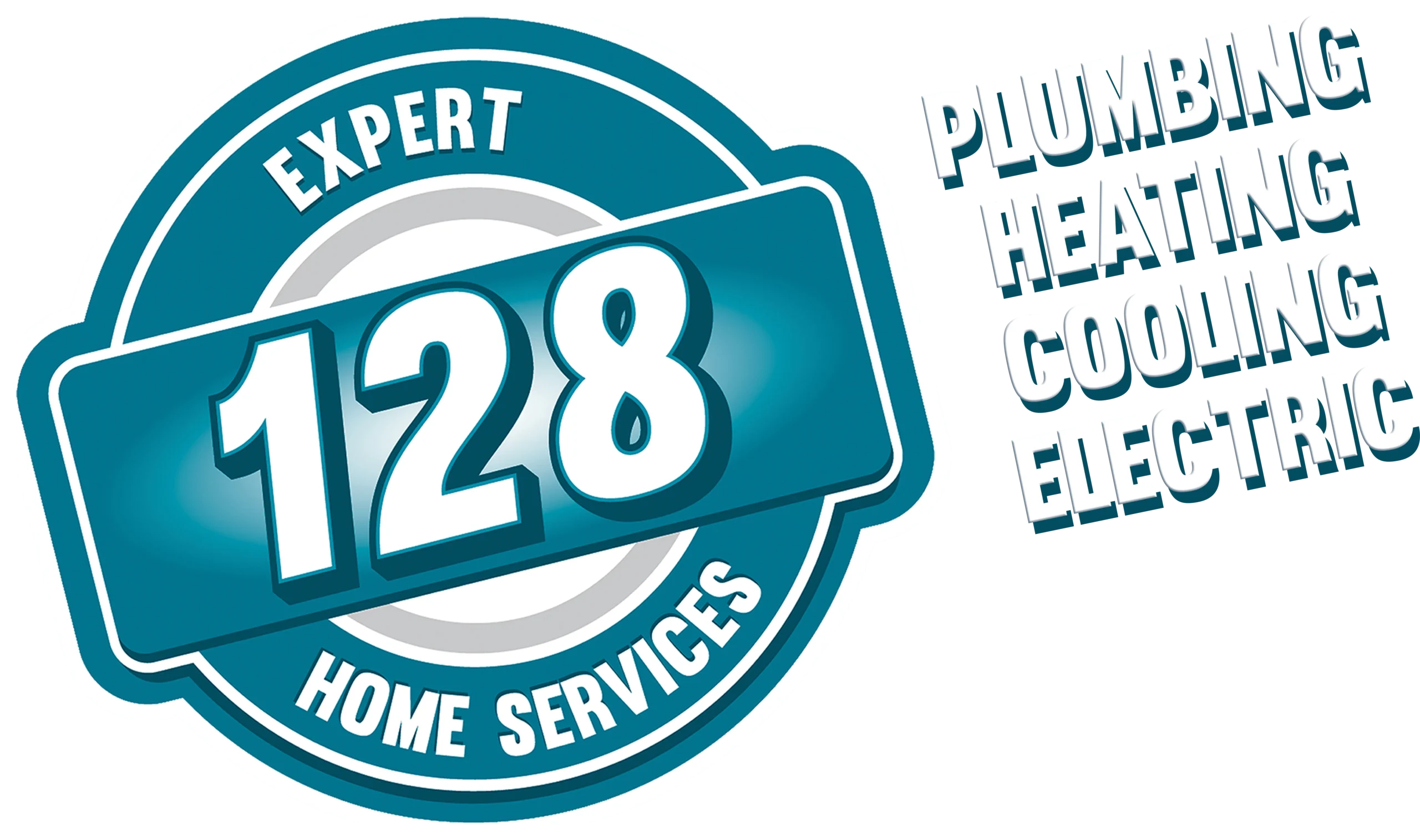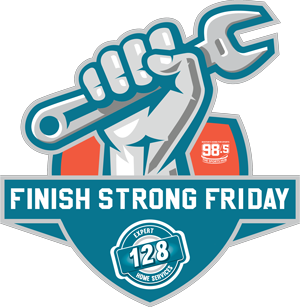When faced with sewer line issues, homeowners must choose between two primary repair methods: sewer pipe lining vs residential excavation. Both have distinct advantages and considerations. Sewer pipe lining, a trenchless repair method, offers a quick, less invasive solution, potentially extending the life of your pipes with minimal landscape disruption. Residential excavation, on the other hand, provides thorough access for diagnosis and repair but can be more disruptive and costly. This article compares the two, giving you the insight needed to make the best decision for your home’s sewer repair needs.
Key Takeaways
- Sewer pipe lining is a less invasive and often more cost-effective method compared to traditional residential excavation, potentially extending pipe lifespan by up to 50 years and requiring less property restoration post-repair.
- Residential excavation offers direct access to pipes for repairs and is suited for precise, targeted work, but it can cause significant property disruption, require extensive landscape restoration, and generally be more expensive.
- Choosing the right sewer line repair method depends on various factors such as pipe condition, location, local regulations, and budget, with professional guidance from experienced service providers like 128 Plumbing, Heating, Cooling & Electric being crucial.
Understanding Trenchless Sewer Pipe Lining
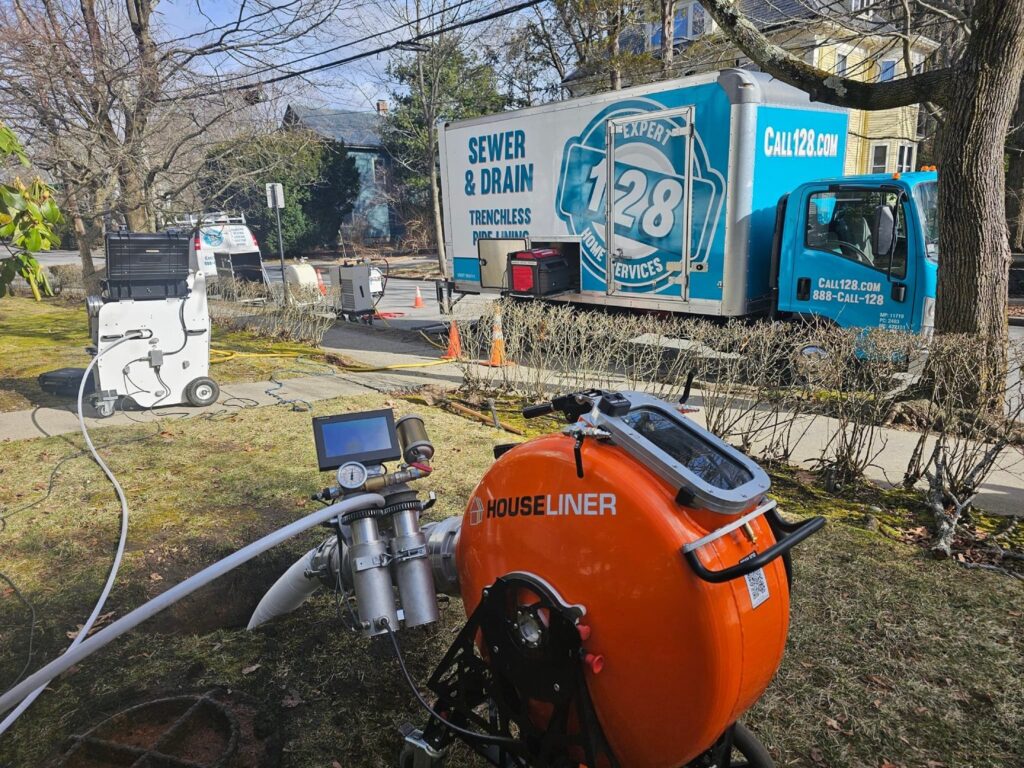
Sewer pipe lining, often hailed as a revolutionary solution in the field of sewer repair, has been gaining traction for its minimal invasiveness and efficiency. Often referred to as trenchless sewer pipe repair, this method utilizes the existing pipe structure as a basis for repair, causing minimal disruption to the property. Sewer lining is a key component of this innovative approach.
The main procedure for repairing a damaged pipe involves:
- Inserting a flexible liner coated with epoxy resin into the damaged pipe.
- This liner, once hardened by UV, forms a new, durable sewer line within the existing, damaged one.
- This innovative method harnesses the existing pipe structure to create a new pipe, offering a seamless solution to sewer line problems and stronger than ever before. Manufacturers say the liner can last up to 50 years.
The Process
The detailed procedure of sewer pipe lining commences with an exhaustive camera inspection of the current pipes. This inspection provides an accurate understanding of the nature and extent of the damage, setting the stage for an effective repair process. After the inspection, the pipes undergo cleaning and preparation for the next stages of the repair.
The crux of this process involves the insertion of a liner filled with epoxy resin into the existing pipe. Made from materials such as felt, fiberglass, or polyester, the liner is cured in place using various technologies, including hot air, steam, or Bluelight LED. This curing process solidifies the liner, effectively creating a robust new pipe within the old pipe.
Advantages of Sewer Pipe Lining
Sewer pipe lining offers a plethora of advantages, making it an increasingly popular choice for homeowners. One of the distinct benefits of this method is the minimal disruption it causes. Traditional excavation methods often leave yards in disarray, affecting gardens, trees, and outdoor features. In contrast, sewer pipe lining preserves these elements, ensuring a tidier repair process.
Moreover, this method significantly increases the durability of sewer systems, potentially extending the lifespan of pipes by up to 50 years. The use of an epoxy resin-coated liner not only ensures robust construction but also improves the flow and reduces the risk of leaks. In the long run, sewer pipe lining proves to be a cost-effective solution, considering quicker completion times, lower restoration costs, and the avoidance of extensive excavation.
Limitations and Considerations
Despite its numerous advantages, sewer pipe lining does come with certain limitations. One of the primary considerations is the condition of the existing pipes. If the pipes happen to be completely crushed for example, they may not be suitable for this method. The deterioration of the existing pipes may hinder the effectiveness of the sewer pipe lining process.
Furthermore, this method may not be compatible in areas with other utilities too close by or where the pipeline damage is extensive. There are also risks associated with trenchless pipe lining, such as permanent modification of pipes and potential damage to sewer pipes when completed by an inexperienced sewer lining team. Therefore, it is critical to thoroughly assess the situation and consider these potential challenges before choosing sewer pipe lining.
Understanding Residential Excavation
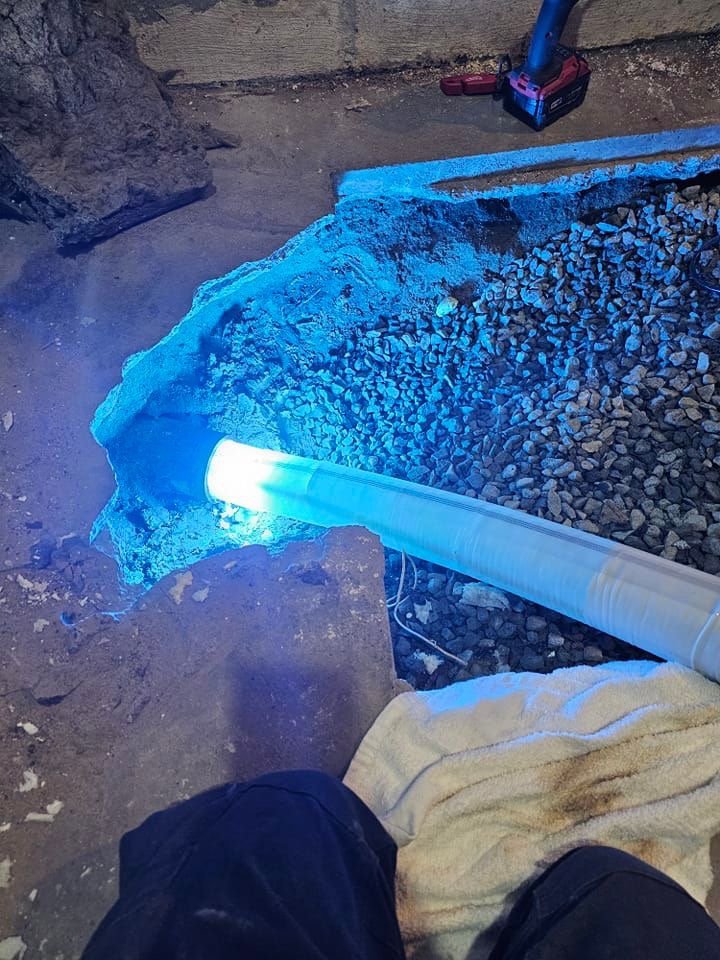
Transitioning now, we’ll explore the conventional method of sewer line repair – residential excavation. This method involves the digging of trenches to gain full access to sewer lines for open-air repairs or replacements. While seemingly simple, residential excavation requires meticulous planning and execution for effective results.
Prior to the digging, several preparation steps may be undertaken depending on your city, such as:
- calling local utility location service
- applying for permits
- establishing sewer line locations
- planning the route
- analyzing soil type
The excavation process itself is a heavy-duty task, often involving machinery like excavators, backhoes, and bulldozers for trenching and exposing sewer lines.
The Process
Traditional excavation for pipe rehabilitation involves the following steps:
- Digging a trench to reveal the damaged sewer pipe for repair or replacement. This may require even a police detail when located underneath streets.
- Marking the excavation area.
- Digging trenches using excavators.
- Exposing the damaged pipe.
- Inspecting the pipe.
- Repairing or replacing the pipe as necessary.
An alternate method for accessing sewer lines, known as open-top excavating, involves digging long trenches directly to reach the sewer pipes. Regardless of the specific method employed, the primary goal remains the same – gaining direct access to the damaged pipe for accurate and effective repair.
Advantages of Residential Excavation
Despite appearing intrusive, residential excavation comes with its unique benefits. One of the primary benefits is the complete access it provides to the pipe and clear visibility for technicians when the pipe is beyond repair or completely crushed, which is not a common situation in Massachusetts residential homes. This full access is crucial for a thorough inspection and effective repairs, ensuring a comprehensive solution to sewer line issues.
This method is particularly well-suited for small repairs, where precision and targeted work are necessary. By directly accessing the damaged area, the repair work is focused and efficient, often leading to long-lasting results and avoiding costly repairs.
Limitations and Considerations
While beneficial, residential excavation does have some constraints that homeowners need to take into account. Weighing the advantages and disadvantages is crucial. The most apparent drawback is the potential for substantial damage to the property. The process often leaves behind a yard that requires extensive landscaping or surface restoration post-repair, adding to the overall effort and cost.
Furthermore, excavation is not only disruptive but also time-consuming. The yard may resemble a construction site for a prolonged duration during repair works, causing inconvenience to the homeowners. Additionally, due to the invasive nature of this method, homeowners may face higher restoration costs for landscaping and potential damage to adjacent streets, sidewalks, and buildings.
Cost Comparison: Sewer Pipe Lining vs. Residential Excavation
In the realm of home maintenance, cost plays a significant role for homeowners. In the case of sewer line repair, the costs can vary greatly depending on the method chosen. For new pipe installation with traditional excavation, homeowners may pay tens of thousands of dollars for labor, equipment, and time necessary to excavate. This cost can escalate drastically if the excavation is under structures like driveways, potentially adding $15,000 to $20,000 more.
On the other hand, trenchless sewer repair methods like pipe lining offer potential savings in property restoration. In fact, trenchless methods can cost 30-40% less than traditional excavation methods, making them a more cost-effective solution for homeowners.
Factors to Consider When Choosing the Right Method
Selecting the appropriate repair method for your home demands careful consideration. Several factors come into play, such as:
- The condition of the pipe
- Location of the sewer line
- Local regulations
- Budget constraints
A thorough assessment of the pipe condition should be the first step, identifying the type and extent of damage. This assessment provides a clear picture of the problem, aiding in the selection of the most suitable method.
The location of the sewer line and local regulations also play a critical role in the selection process. Areas with other utilities too close by or with extensive pipeline damage may not be suitable for certain methods. Finally, homeowners must weigh their budget constraints while considering long-term savings in money, time, and stress. Seeking expert advice from professionals can provide tailored recommendations on the most suitable sewer pipe rehabilitation approach.
Professional Guidance: 128 Plumbing, Heating, Cooling & Electric Expertise
Securing a trustworthy service provider is a vital part of sewer line repair. 128 Plumbing, Heating, Cooling & Electric, with its 30+ years of industry experience and a reputation for high-quality service, stands as a trustworthy choice. The company has served over 50,000 customers and garnered thousands of 5-star reviews, demonstrating consistent customer satisfaction.
The company offers a range of services including:
- Residential heating & A/C system installations
- Emergency services
- Electrical work
- Drain cleaning
- Specializes in trenchless pipe lining
With its headquarters in Wakefield, MA and additional locations in North Andover and Middleton, MA, 128 Plumbing ensures extensive accessibility in Massachusetts, catering to a wide range of home service needs.
Preventive Measures and Maintenance Tips
The old saying ‘Prevention is better than cure’ is highly applicable when it comes to preserving the health of your sewer lines. Regular sewer maintenance is key in early detection of issues and can potentially prevent more costly problems down the line.
Proper disposal of waste is another crucial aspect of sewer line maintenance. Here are some tips to follow:
- Avoid flushing items that do not break down easily and can cause severe clogs.
- Refrain from pouring greases and fats down the drain.
- Use garbage disposals correctly.
- Install food strainers or hair catchers to help prevent blockages in the mainline.
Case Studies: Success Stories from 128 Plumbing, Heating, Cooling & Electric
The proficiency and commitment of 128 Plumbing are mirrored in their success stories. The company has efficiently resolved severe main line blockages caused by tree roots, cracks, or intrusions using the latest pipe pipe lining technology, as well as pipe bursting methods, as illustrated by a customer testimonial. Another two-day sewage pipe preparation and lining project was lauded by a client for the team’s professionalism, knowledge, and communicative approach.
In situations of urgency, 128 Plumbing has demonstrated their ability to swiftly respond to emergencies. A case in point is their swift response to two blocked sewer lines on a Friday night, ensuring rapid and expert service to a homeowner in need. These success stories emphasize their commitment to quality service and customer satisfaction in both planned and urgent situations, solidifying their reputation in the industry.
Summary
In summary, both sewer pipe lining and residential excavation have their unique advantages and limitations. While sewer pipe lining offers a minimally invasive and cost-effective solution, it may not be suitable for severely damaged or crushed. On the other hand, residential excavation provides complete access and visibility for repairs but can be disruptive costly, and time-consuming.
Choosing the right method involves a thorough assessment of the pipe condition, consideration of the location and local regulations, and a careful evaluation of budget constraints. Professional guidance, such as that offered by 128 Plumbing, Heating, Cooling & Electric, can provide valuable insights and tailored recommendations to help homeowners make the best choice.
Frequently Asked Questions
What is sewer pipe lining?
Sewer pipe lining is a minimally invasive method for sewer repair, using a flexible liner coated with epoxy resin to create a new pipe within the existing damaged one. It is a modern and effective solution for repairing sewer systems.
What are the advantages of sewer pipe lining?
Sewer pipe lining offers minimal disruption to property, increased durability, and cost-effectiveness in the long run, making it a reliable choice for sewer repair.
What is residential excavation?
Residential excavation involves digging trenches to gain access to sewer lines for open-air repairs or replacements. This process is essential for maintaining and repairing residential sewage systems.
Are there any limitations of residential excavation?
Yes, residential excavation can cause substantial damage to a homeowner’s property, is time-consuming, and may result in higher restoration costs. It’s important to carefully consider these limitations before starting any excavation project.
What factors should I consider when choosing the right repair method?
When choosing the right repair method, consider the pipe condition, location, local regulations, and budget constraints. These factors will help you make an informed decision.
